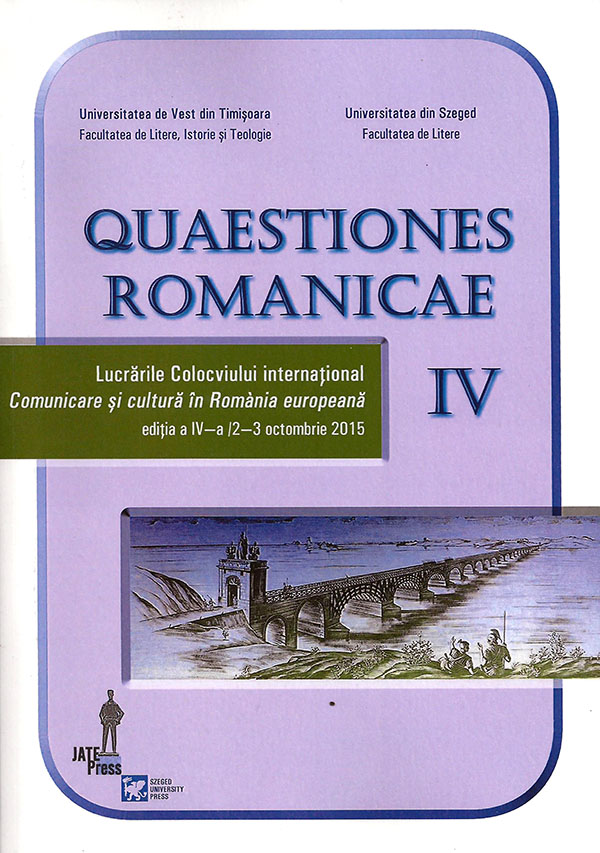Imaginar şi fantastic literar
Abstract: (The Fantastic Imagery in Literature) The narrative techniques and procedures which derive from using fantastic imagery are reflections of the authors' perceiving things: Eliade, even when he seems to refer to the inhuman mechanism of the totalitarian regimes, goes beyond this fact and reinterprets the great myths of humanity; Bulgakov relives his fears and nervosas, but also his rebellion, or his helplessness in front of terror, converted into hallucinating or clownish literary fantastic. Both create, at the same time, new literary ways of lecturing a text and interpreting codes.
Keywords: literary fantastic, narrative techniques, structure of the novel, literary imaginary.
Rezumat: Destinele unor scriitori emblematici pentru cultura universală, precum Mircea Eliade şi Mihail Bulgakov, sunt reflectate şi de operele lor. Tehnicile şi procedeele narative care decurg din utilizarea formulei fantasticului literar dau seamă de structura imaginarului autorilor: Eliade, chiar şi atunci când pare să vizeze mecanismul inuman al regimurilor autoritare, trece dincolo de acest fapt şi reinterpretează marile mituri ale omenirii; Bulgakov îşi retrăieşte spaimele şi nevrozele, dar şi revolta, ori neputinţa în faţa terorii, drapate în fantasticul literar halucinant, ori clovneresc. Amândoi creează, în acelaşi timp, noi coduri de lectură şi de interpretare a textului literar.
Cuvinte–cheie: fantastic literar, tehnici literare, structură romanescă, imaginar literar.
